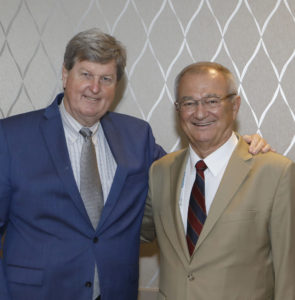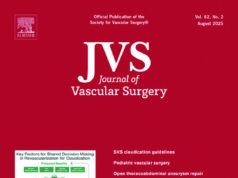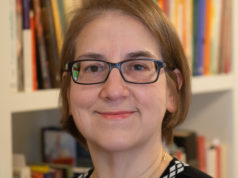
Their terms about to end, Peter Gloviczki, MD, and Peter Lawrence, MD, editor-in-chief and senior editor, respectively, of the Journal of Vascular Surgery family of publications reflect on their time at the helm and the changes they’ve seen—and implemented—along the way.
JVS publications include the flagship journal, Journal of Vascular Surgery, in its 39th year of publication; Journal of Vascular Surgery: Vascular and Lymphatic Disorders (JVS-VL), now in its 10th year of publication; JVS-Cases, Innovations & Techniques (JVS-CIT) and the newest member of the family, focusing on basic and translational science, JVS-Vascular Science (JVS-VS). The journals are sometimes known—in a type of shorthand—by their cover colors, a change instituted by Gloviczki and Lawrence, with red for JVS, blue for JVS-VL, gray for JVS-CIT and green for JVS-VS.
They have overseen a number of changes and accomplishments. “We have considerably transformed our editorial policies, increased the diversity of our editorial boards and included more than 25 percent more women and underrepresented minorities,” they said in a farewell message of sorts in the journals’ June issues that reflects upon their six years as editors. Their terms end at the end of June.
In addition, the journals now are part of a JVS portfolio that encompasses a wide range of communications vehicles, with the additions reflecting changing landscape media and information platforms. Among the portfolio are monthly “Editors’ Choice” videos, press releases, visual abstracts, the increasingly popular JVS Journal Clubs and the Audible Bleeding podcasts.
Today, JVS has an all-time high impact factor of 4.268, and the PlumX metrics, reflecting social media impact, has seen a major increase.
“I think we had a vision of what we wanted to achieve,” said Gloviczki. At the time, the two had known each other well for more than a decade, with a common history. Both had connections with Leslie and Susan Gonda, vascular benefactors who contributed generously to Mayo Clinic, institutional home of Gloviczki, as well as to the University of California Los Angeles, where Lawrence is director of the UCLA Gonda Vascular Surgery.
“I thought we would do very well together as a pair of editors of the Journal,” said Gloviczki.” Said Lawrence of their time in leadership: “He was the driving force, but he and I walked together.”
Chief among their aims was to maintain the journals’ excellence, and also grow them and broaden their scope to cover additional key areas of vascular disease management.
“We knew our specialty was (and is) becoming more diverse. More women are going into it, there is more ethnic, racial and cultural diversity,” said Lawrence.
“And we knew vascular surgeons were not all doing the same operations. To keep the involvement of members as the field changed, we needed to change as a journal. We needed to separate the types of papers being published.”
For example, increasingly more papers were being submitted to JVS that belonged, instead, to JVS-VL, published in collaboration with the American Venous Forum. The journal first known as “Case Reports” and then “Cases and Innovative Techniques” was renamed “JVS: Cases, Innovations and Techniques.”
This permitted expanding the range of papers. “We could take topics originally published in JVS that concentrated on innovations in practice management or education and put them in CIT,” said Lawrence.
Both also felt that there needed to be a place in JVS and the SVS for papers concentrated on basic and translational research, not simply emphasizing clinical research.
“If we wanted to stay a Society on the cutting edge, we could not marginalize basic research, which is critical to vascular surgery. So we initiated JVS-Vascular Science—and got a renowned basic research scientist to be editor [Alan Dardik],” said Lawrence.
They also oversaw creation of four separate websites, for submission to each journal, plus separate editorial boards.
The two emphasized an international presence, attending meetings around the world and spreading the word about the journals. They invited surgeons in other countries to be part of the editorial boards and sought international guidance on certain clinical practice guidelines. Today, more than 50 percent of submissions come from outside the United States, compared to approximately 10% earlier.
They added an internship program, to train young people how to become good reviewers while also emphasizing diversity, equity and inclusion issues. “We took the cream of the crop,” said Gloviczki. The seven Year 1 interns, who will be honored at the Vascular Annual Meeting, wrote peer reviews and commentaries attended monthly lectures and national vascular meetings and studied how to incorporate DEI into research and medical/science journals.
“It was a very successful first year of the program and without a double it is going to grow,” he said.
Lawrence also takes pride in the publication’s online Journal Club, led by Paul DiMuzio, MD, and Misty Humphries, MD. The club educates vascular surgical trainees in interpreting high-level clinical and basic science articles and how to appropriately apply the information to clinical practice and future research.
Both men know they are leaving the “family” in good hands, particularly with the restructuring to add strength and guidance. Past President Ronald Dalman, MD, has been named executive editor, to oversee the big picture and to enhance brand identity for all things in JVS. Thomas Forbes, MD, takes over editorship of JVS, while Ruth Bush, MD, and Matthew Smeds, MD, are the new editors-in-chief of JVS-VL and JVS-CIT, respectively. Alan Dardik, MD, will become editor-in-chief of JVS-VS.
This spreads the workload around, will help to continue differentiation of the journals and will increase involvement of SVS members, especially younger ones, as reviewers and eventually associate editors.
“It’s a good idea to have someone at the top overseeing all four journals,” said Gloviczki. “They certainly have a very bright future.”
Both also praised the staff and reviewers for the successes of the publications. “None of this progress would have been possible without the expert and dedicated team of the JVS family,” they said. “Great things, as [Apple Computer co-founder] Steve Jobs once said, are always done by a team of people.”












